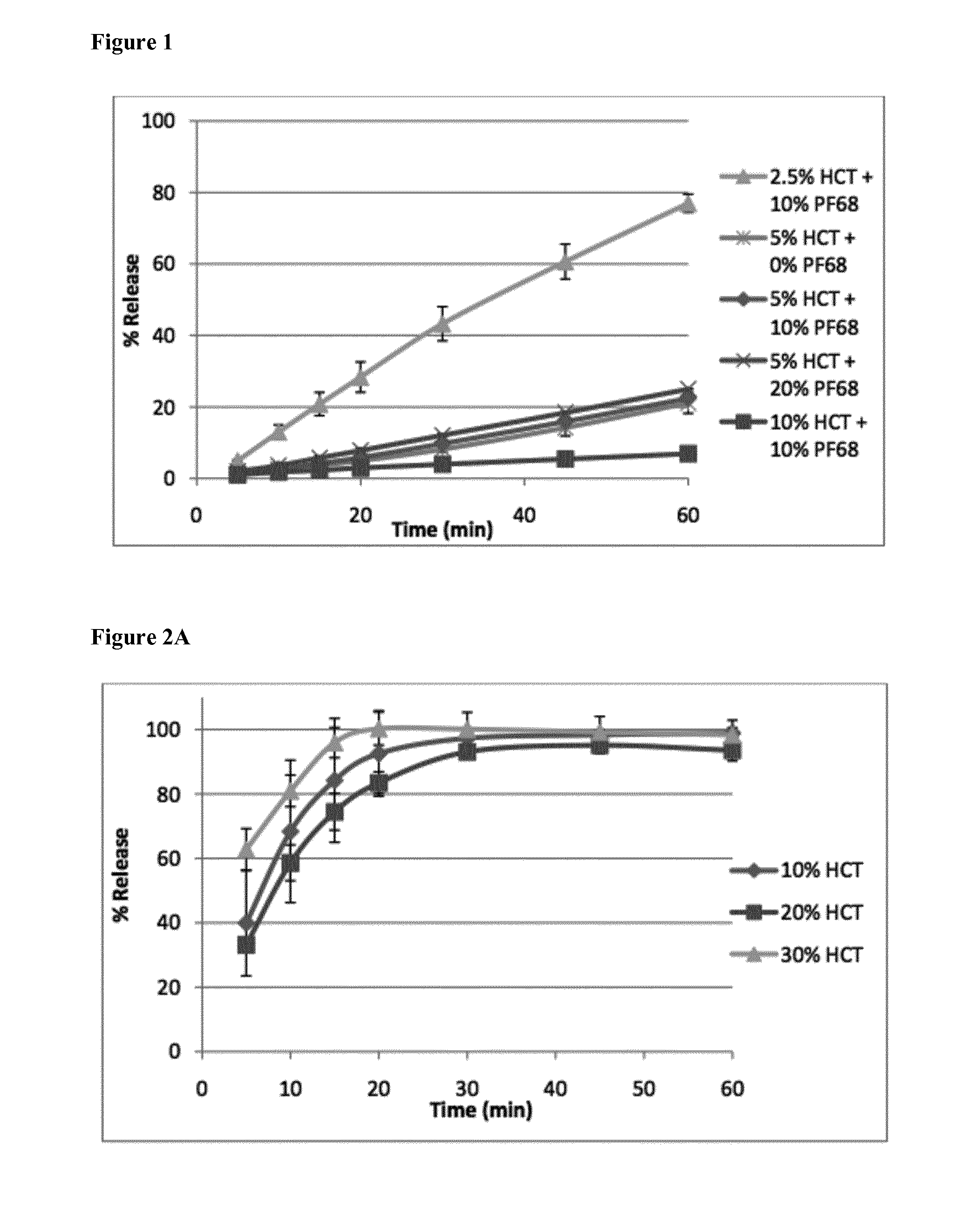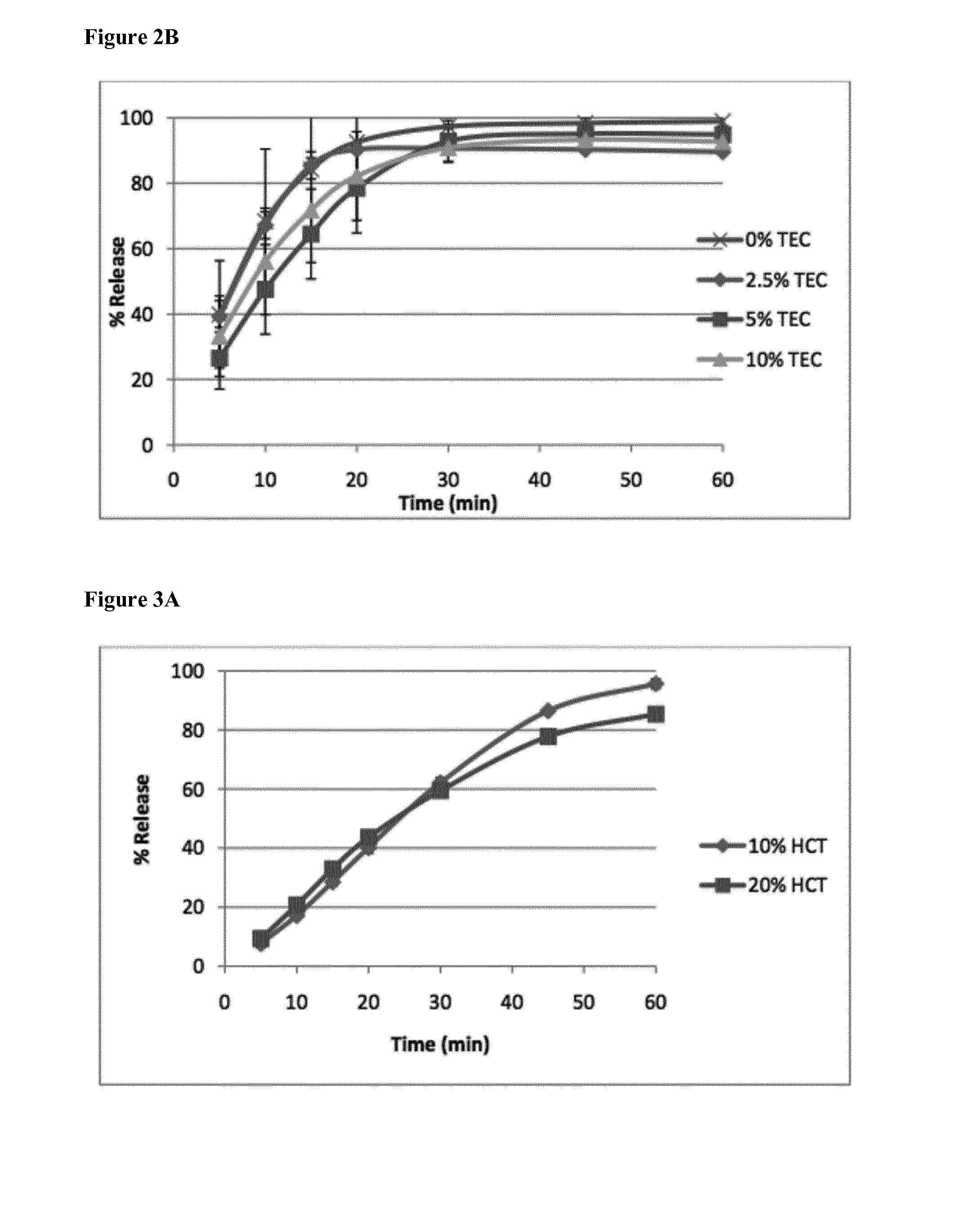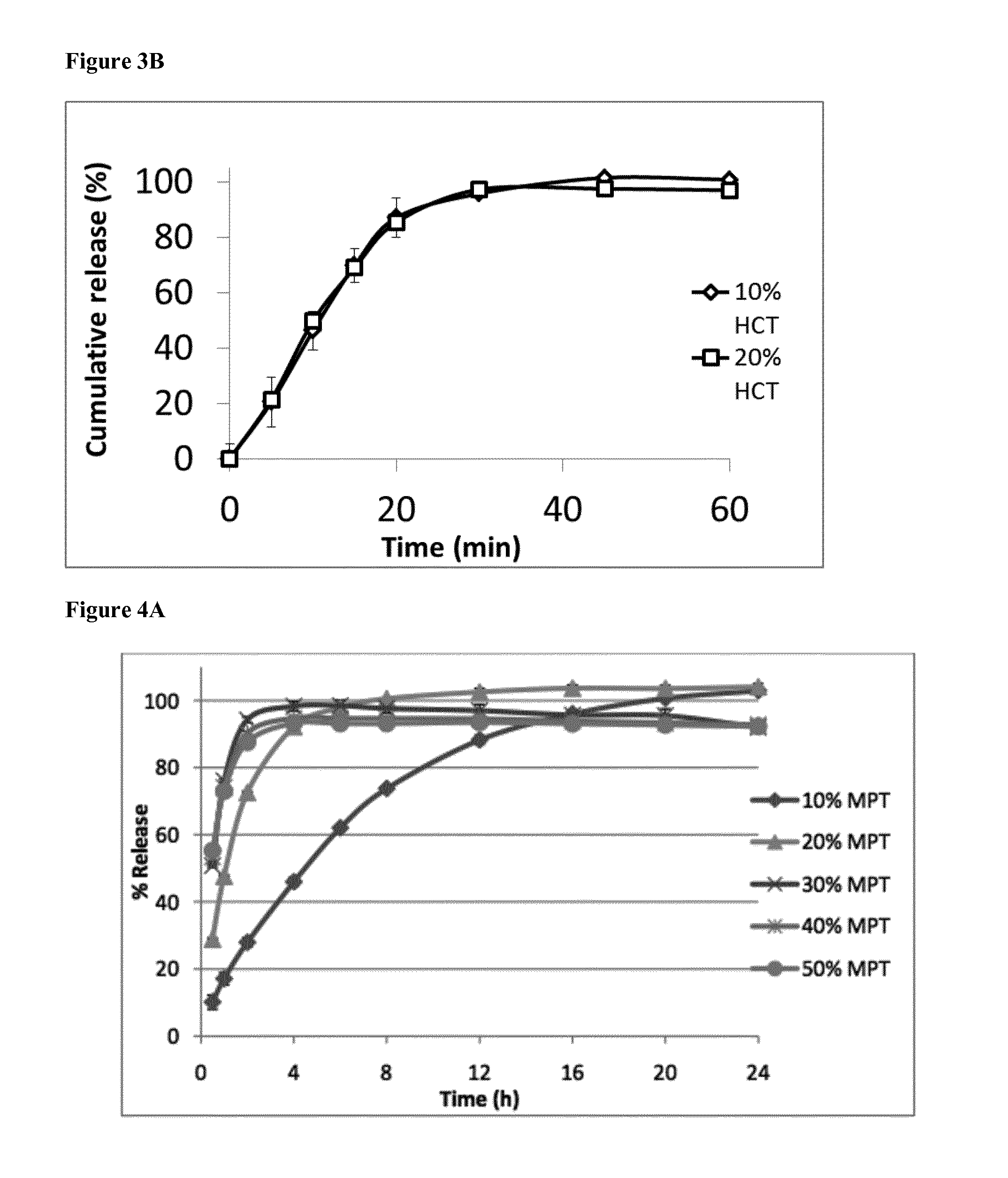Multi-layered release formulation
a technology of multi-layered release and formulation, which is applied in the direction of drug composition, extracellular fluid disorder, biocide, etc., can solve the problems of difficult design of oral delivery systems containing drugs, many drawbacks in batch process manufacturing, and less suitable conventional dosage forms
- Summary
- Abstract
- Description
- Claims
- Application Information
AI Technical Summary
Benefits of technology
Problems solved by technology
Method used
Image
Examples
example 1
Selection of Suitable Polymers for Immediate Release
[0119]In this first example, we examined the release profiles of multiple (co)polymers, to determine the most suitable (co)polymers for preparing a solid pharmaceutical dosage form having an immediate release coat layer.
1. Copolymer Comprising Polyvinylcaprolactam, PEG and Polyvinylacetate (SOLUPLUS®)
[0120]To evaluate the release properties, formulations with different drug loads (2.5, 5, 10% HCT (hydrochlorothiazide) (w / w)) were tested. The influence of the addition of a plasticizer, Pluronic® F68 (copolymer of ethylene and propylene oxide), was also tested by making formulations with a fixed drug load of 5% HCT and various amounts of this plasticizer (0, 10, 20% Pluronic® F68). All formulations were extruded at a temperature of 130° C., except the one without Pluronic® F68 that was extruded at 150° C. The addition of Pluronic® F68 significantly lowered the extruder torque. The extrudates that contained 2.5% drug were transparent,...
example 2
Selection of Suitable Polymers for Controlled Release
[0127]In this second example, we examined the release profiles of multiple (co)polymers, to determine the most suitable (co)polymers for preparing a solid pharmaceutical dosage form having a controlled release core layer.
1. Copolymer Comprising Eudragit® RS PO
[0128]Five formulations with different drug loads up to 50% were extruded. In a first phase, no plasticizer was added to the formulations. The extrusion temperature was 120° C. for the formulations with 10 and 20% of drug (MPT—metoprolol tartrate), 110° C. for the one with 30% drug and 100° C. for the ones with 40 and 50% of drug. The torque was as follows: 75% for 10% MPT, 65% for 20% MPT, 60% for 30% MPT, 70% for 40% MPT and 60% for 50% MPT. The extrudates were glassy and transparent up to 30% of drug. Extrudates with higher drug loads became slightly white and were more flexible.
[0129]After 24 hours of dissolution, all particles retained their shape but became white. The d...
example 3
Preparation and Testing of Co-Extruded Two-Layered Pharmaceutical Dosage Forms
[0149]In this example, we manufactured different co-extruded two-layered pharmaceutical dosage forms comprising an immediate release coat layer and a controlled release core layer, based on the findings as represented in examples 1 and 2.
[0150]As already explained herein before, the pharmaceutical dosage form according to this invention preferably provides a first burst off phase in which the majority of the active ingredient(s) comprised in the immediate release coat layer(s) of the formulation is released within the first hour after administration of the pharmaceutical dosage form, preferably within the first 30 min, most preferably within the first 20 min. In the second release phase, the majority i.e. about 80, 85, 90, 95 or 100% of the active ingredient(s) comprised in the controlled release core layer, is gradually released within 24 hours after administration of the pharmaceutical dosage form.
[0151]...
PUM
| Property | Measurement | Unit |
|---|---|---|
| weight % | aaaaa | aaaaa |
| weight % | aaaaa | aaaaa |
| thickness | aaaaa | aaaaa |
Abstract
Description
Claims
Application Information
 Login to View More
Login to View More - R&D
- Intellectual Property
- Life Sciences
- Materials
- Tech Scout
- Unparalleled Data Quality
- Higher Quality Content
- 60% Fewer Hallucinations
Browse by: Latest US Patents, China's latest patents, Technical Efficacy Thesaurus, Application Domain, Technology Topic, Popular Technical Reports.
© 2025 PatSnap. All rights reserved.Legal|Privacy policy|Modern Slavery Act Transparency Statement|Sitemap|About US| Contact US: help@patsnap.com



